Top 6 Interesting Facts About Venus
Venus is the name of the second planet from the sun, and its name is from a Roman goddess of beauty. After the moon, it is the second-brightest natural object. ... read more...Venus is a terrestrial planet with no moons and can occasionally be seen with the unaided eye in broad daytime. It has turned out to be sacred to many different gods and serves as a major source of inspiration for poets and authors. If you are curious, let's follow Toplist to discover some interesting facts about Venus.
-
Venus is the name of the Roman goddess of love and beauty, and it is the second planet from the Sun. Venus can throw shadows and can be seen with the unaided eye in the open sky since it is the second-brightest natural object behind the Moon in the Earth's night sky. The maximum elongation of Venus' orbit, which is 47°, makes it more easily visible in latitudes with a day-night cycle for up to a few hours after the start of a sunset or before sunrise. Venus' orbit is smaller than that of Earth, yet it is nevertheless more elongated than Earth. It has occasionally been visible against a pitch-black sky.
Venus is a bizarre, hostile planet. Venus is roughly the size of Earth and orbits the sun at a distance that is two-thirds that of our planet. The world is covered in a thick, deadly atmosphere of carbon dioxide and sulfuric acid, and it experiences a runaway greenhouse effect that raises surface temperatures to a life-ending 900 degrees Fahrenheit (475 degrees Celsius). A further peculiarity of this universe is as follows: Venus takes 225 Earth days to complete its orbit around the sun, while it takes 243 Earth days for the planet to rotate around its axis. Thus, a day on Venus would be longer than a year.
Time to rotate around its axis: 243 Earth days
Time to complete orbit of the Sun: 225 Earth days
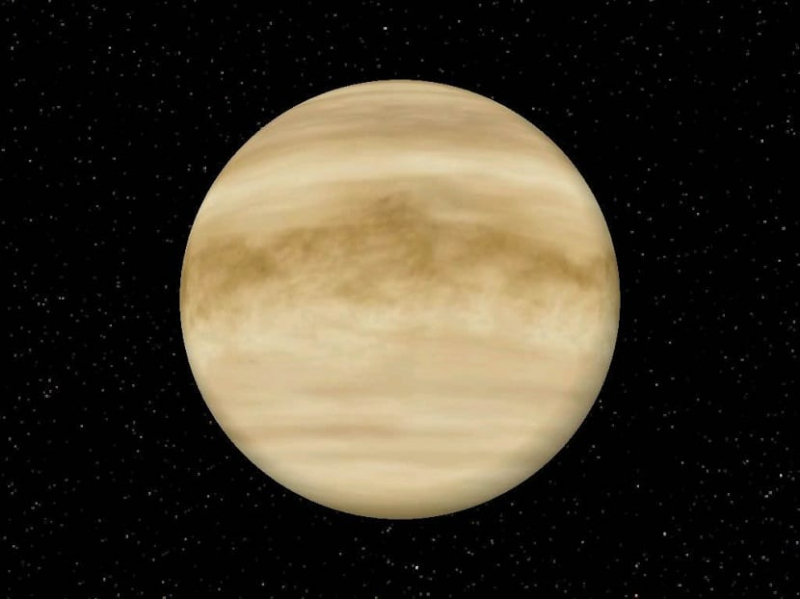
Photo: meteorologiaenred 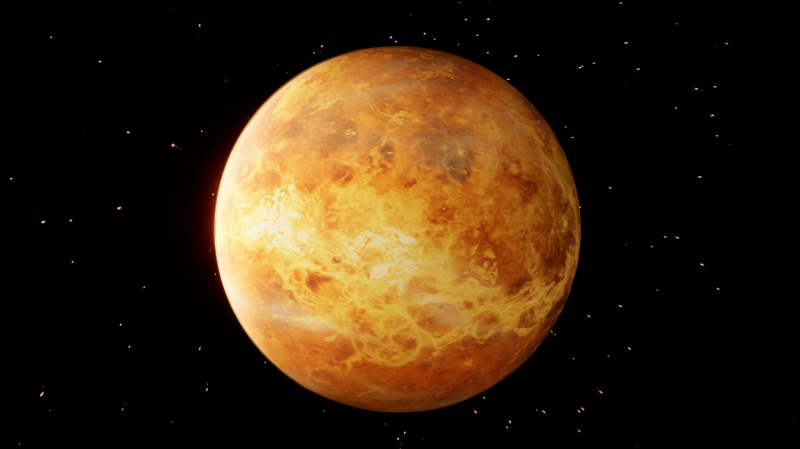
Photo:space -
Because of its similarity to Earth in terms of size, mass, distance from the Sun, and bulk composition, Venus, the third-smallest planet in the solar system, is frequently referred to as Earth's "sister planet." In other ways, it differs greatly from Earth. With an atmosphere made up of more than 96% carbon dioxide, it has the densest atmosphere of the four terrestrial planets. The air pressure on the planet's surface is nearly 92 times greater than the pressure at sea level on Earth, or about 900 meters (3,000 feet) underwater.
Venus has the warmest surface of any planet in the Solar System, with a mean temperature of 737 K (464 °C; 867 °F), despite Mercury being closer to the Sun. Venus' surface cannot be seen from Earth because of an opaque covering of sulfuric acid clouds that are extremely reflective. Oceans of water may have existed in the past, but when they evaporated, a runaway greenhouse effect caused the temperature to rise. Due to the absence of a planetary magnetic field, the water has most likely photodissociated, and the free hydrogen has been carried into interplanetary space by the solar wind. The planet is sometimes referred to as Earth's "evil twin" due to the deadly surface conditions.
Mean temperature: 737 K (464 °C; 867 °F)
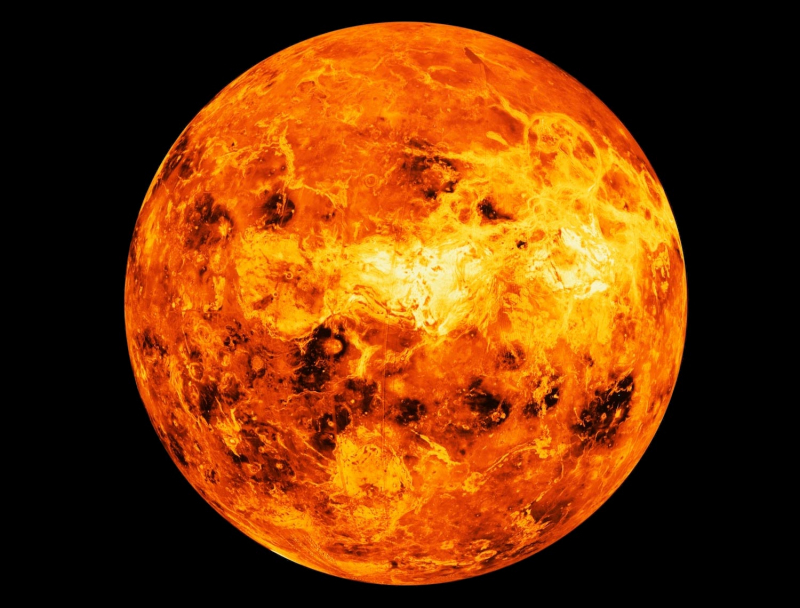
Photo; scitechdaily 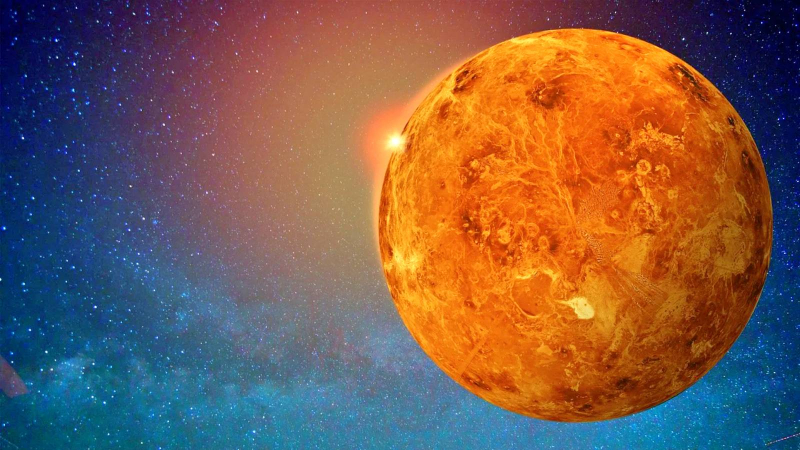
Photo:presstories -
As seen from above the North Pole of Earth, every planet in the Solar System revolves around the Sun in an anticlockwise orientation. One of the interesting facts about Venus is it has the slowest rotation of any planet, rotating clockwise in retrograde once every 243 Earth days. The majority of planets likewise rotate on their axes in an anticlockwise way. Venus is very near to being spherical due to its slow rotation. Thus, a sidereal day on Venus lasts longer than a year on Venus (243 versus 224.7 Earth days). Earth's equator revolves at 1,674.4 km/h, whereas Venus's rotates at 6.52 km/h.
According to current understanding, Venus initially rotated in the same direction as the majority of other planets and, in a sense, still does today; at some time, it simply reversed its axis 180 degrees. In other words, it spins in the same direction as always, just upside down, making the spin appear to be backward when viewed from other planets. Strong air tides may have resulted from the sun's gravitational influence on the planet's extremely dense atmosphere, according to some scientists. These tides, along with friction between Venus's mantle and core, may have been the initial cause of the flip.
Jacques Laskar and Alexandre Correira now argue that Venus might not have actually flipped at all. Instead, they suggest that its spinning slowed to a halt before turning around. The scientists came to the conclusion that Venus's axis might have moved to a range of points throughout the planet's evolution by taking into consideration the aforementioned variables as well as tidal influences from other planets. It will eventually settle into one of four stable rotation states, two in each direction, whether it flips or not. Venus would be more stable in one of the two retrograde rotating modes, the researchers add.
Source: SMART BANANA youtube channel 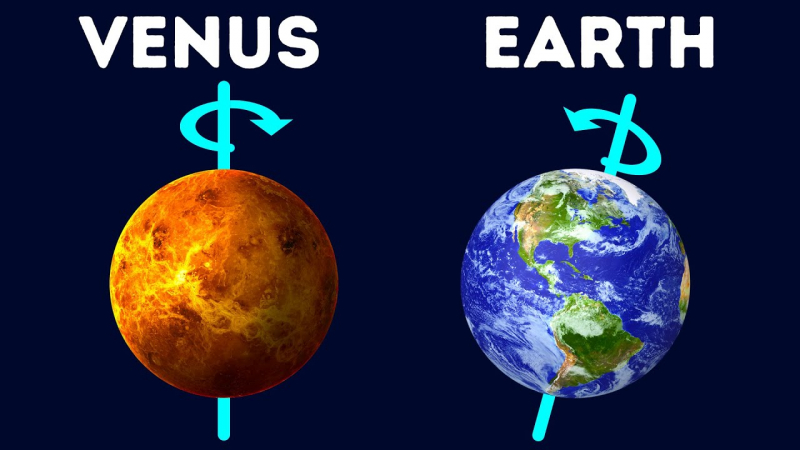
Photo; realonomics -
Venus' atmosphere is reflective and glossy due to sulfuric acid clouds, which prevents us from seeing its surface. Venus is the only planet or star visible to the naked eye as a white point of light (apart from the Sun). The planet's standard deviation is 0.31 and its mean apparent magnitude is 4.14. About a month before or after inferior conjunction, the crescent phase displays the brightest magnitude. When Venus is backlit by the Sun, its brightness drops to roughly magnitude 3. Although the planet can be seen in broad daylight, it is easier to see when the Sun is low in the sky or setting. It always resides within around 47° of the Sun due to its low status.
Every 584 days, Venus "overtakes" Earth in its orbit around the Sun. The "Evening Star," which is visible after sunset, transforms into the "Morning Star," which is seen before daybreak, as it moves in this manner. Venus is very visible when it is at its brightest, unlike Mercury, the other inferior planet, which has a maximum elongation of only 28° and is frequently difficult to see in the evening. Due to its longer maximum elongation, it can be seen in the night sky for hours after sunset. Venus is an often reported "unidentified flying object" in error because it is the brightest point-like object in the sky.
The First brightest Natural Object In The Night Sky: Moon
The Second-brightest Natural Object In The Night Sky: Venus
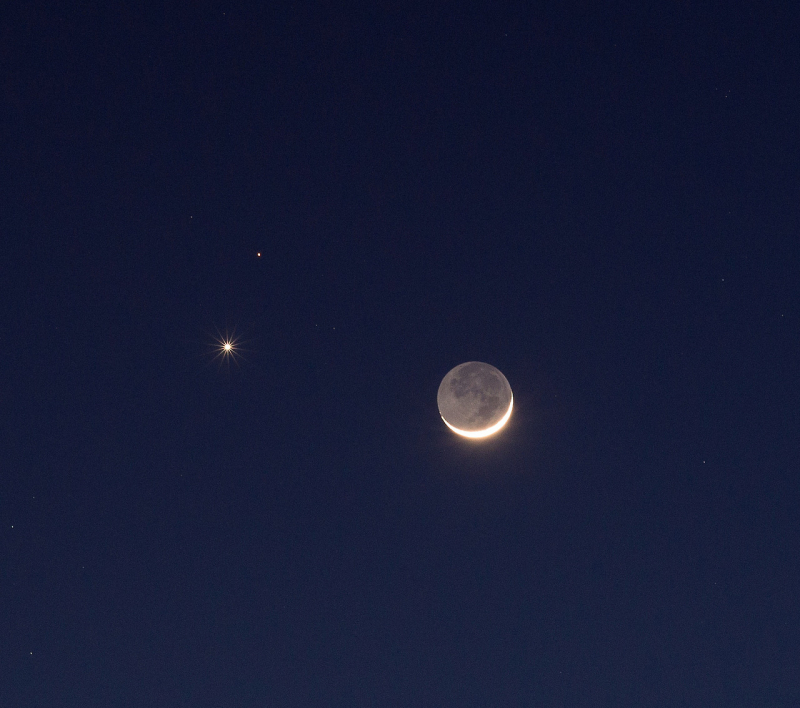
Photo: wonders-of-the-cosmos.tumblr 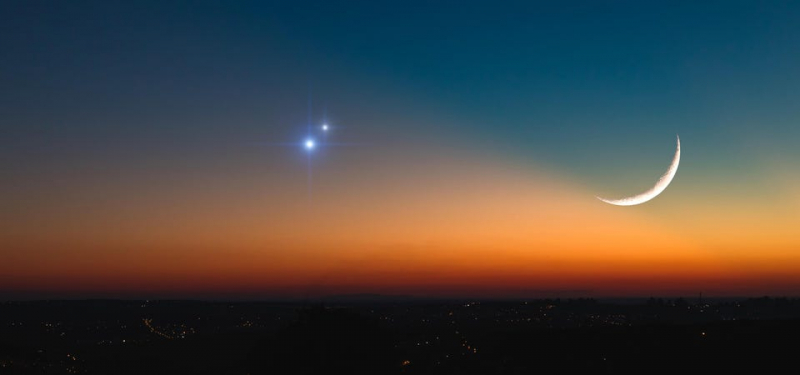
Photo: forbes -
Venus's atmosphere could contain life. But after the early 1960s, when it became apparent that the circumstances on Venus' surface are harsh in comparison to those on Earth, speculation over the likelihood of life on Venus' surface rapidly reduced. Because of Venus's high temperatures and pressure, it is doubtful that there would be any water-based life as we know it.
The upper, cooler, more acidic layers of Venus' atmosphere may contain thermoacidophile extremophile microbes, according to some scientists. Such conjectures date back to 1967, when Carl Sagan and Harold J. Morowitz wrote in a Nature article that they thought microscopic things seen in Venus' clouds might be bacteria-like life (which are of approximately the same size).
In September 2020, a group of astronomers led by Jane Greaves from Cardiff University reported that they were likely to have found phosphine in the planet's higher clouds. This gas is not known to be formed by any known chemical reactions on the surface or atmosphere of Venus. Living things are one suggested source for this phosphine. Phosphine was only found in mid-latitudes and at altitudes of at least 30 miles above the surface; it was not found at the poles. According to NASA Administrator Jim Bridenstine, the discovery of phosphine is "the most significant development yet in establishing the case for life off Earth," and he used it to publicly urge for a renewed emphasis on Venus research.
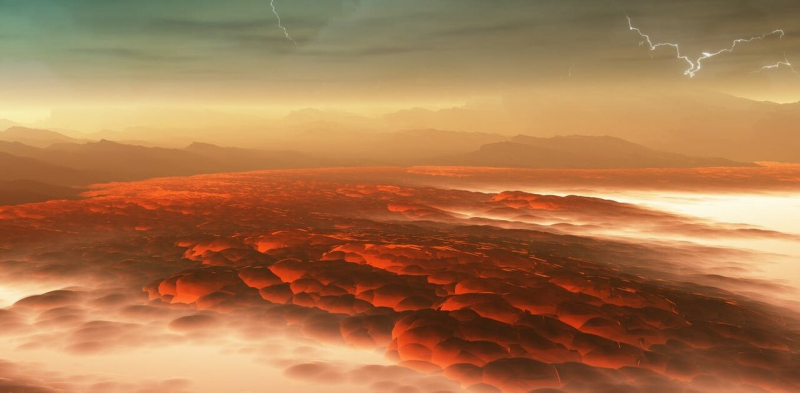
Photo: phys 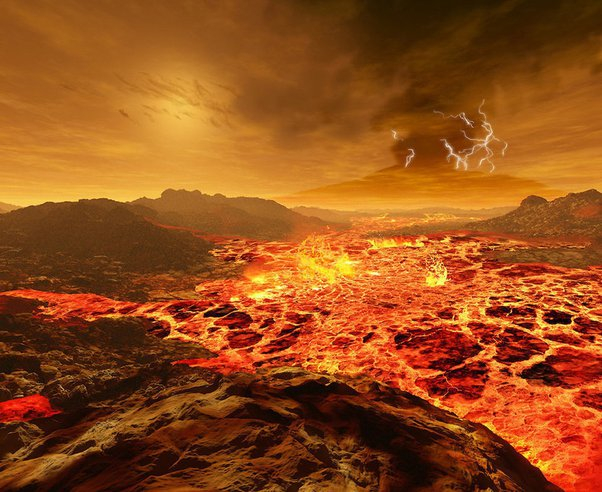
Photo: quora -
One of the interesting facts about Venus is it appears to be the most lovely planet from afar, with lovely light in the sky. Venus seems brilliant and radiant in the sky due to its close proximity to the earth. Early astronomers were so moved by the seeming beauty of Earth's sister planet that they gave it the name Venus, after the Roman goddess of love and beauty.
You would observe a plethora of mountains and deep craters, though, if you approached its surface. The number of volcanoes would also be in the hundreds, with sizes ranging from quite huge to quite small. Compared to other planets, it contains the most volcanoes. Volcanoes appear to have formed a large portion of Venus' surface. Venus has 167 big volcanoes that are above 100 kilometers in size, which is 167 times more than Earth (60 mi). One of the biggest is Sapas Mons. In forming their surface, the volcanoes are a significant factor.
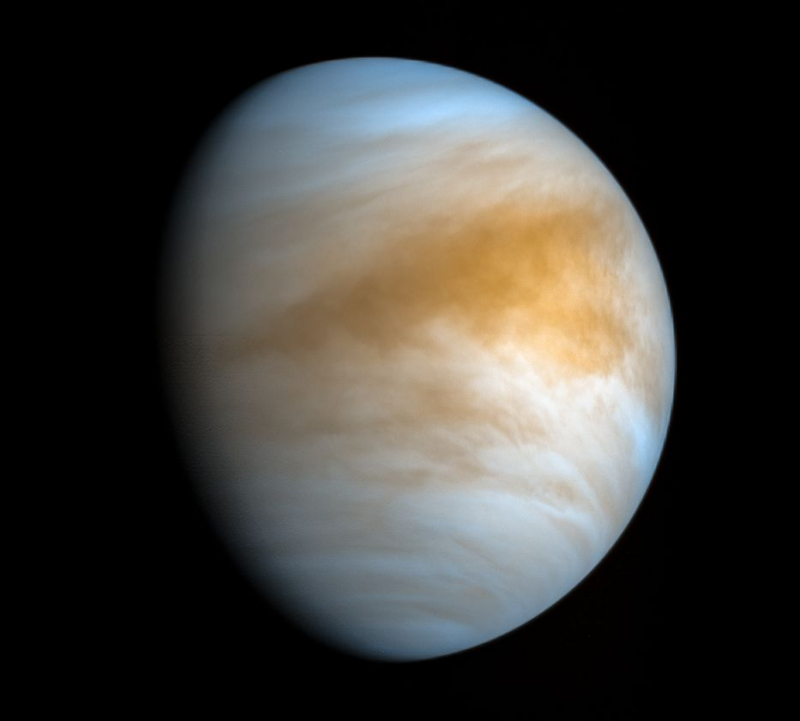
Photo: space 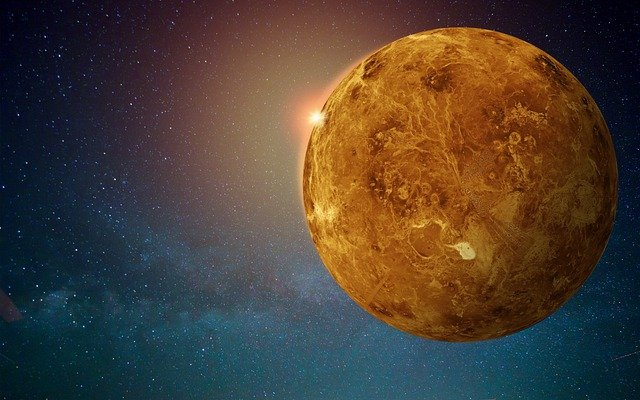
Photo: localhistories



























